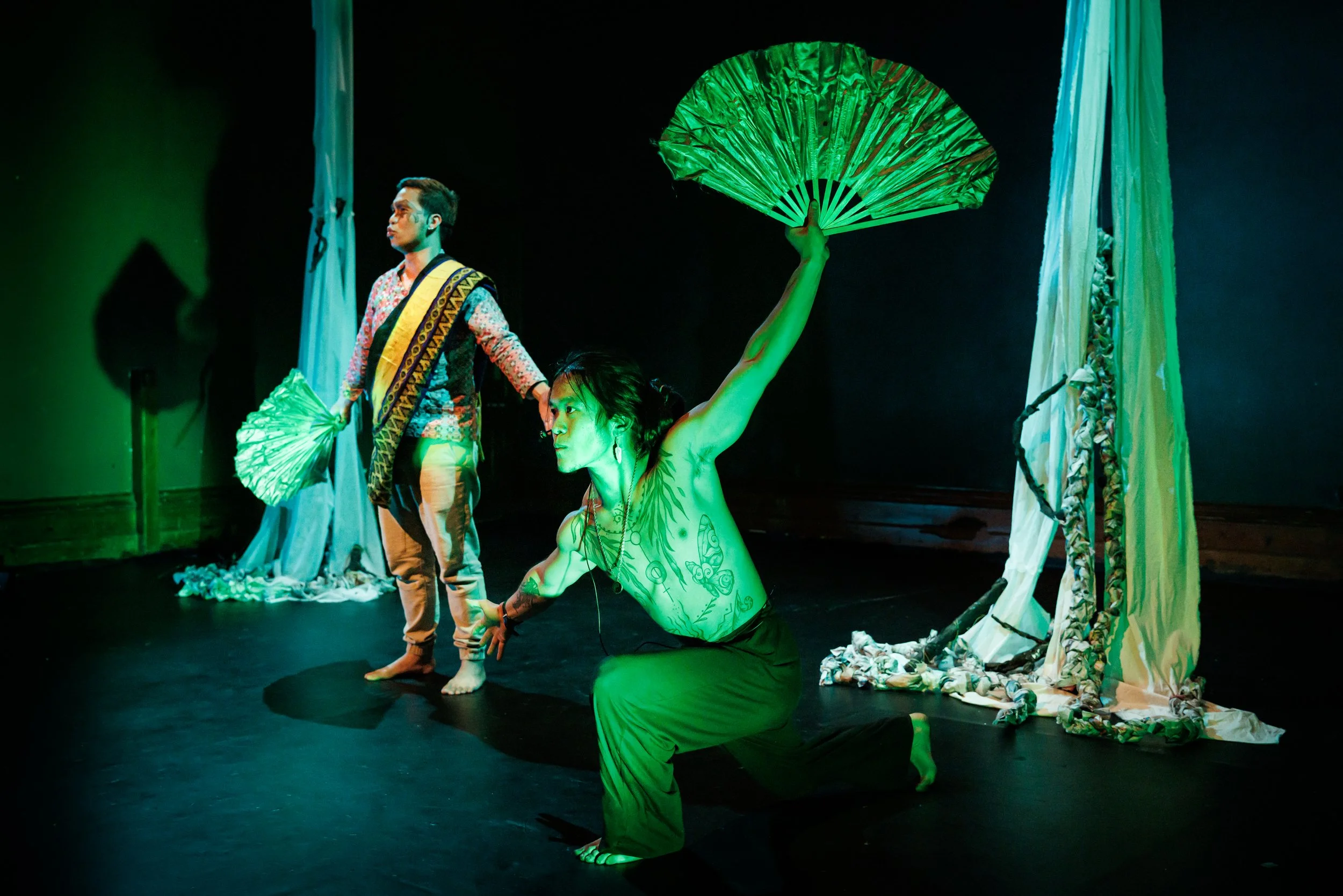REVIEW: The Field of Forgotten Dreams, a Mythical Journey of Freedom and Resilience
The Field of Forgotten Dreams is a new children’s play written and directed by Ricardo Magno, and presented as part of La Mama’s Festival of Mother Tongues between 16 - 18 November at La Mama Courthouse.
Language: Filipino and English
Performed by: Francine Miranda, Alecx Barredo, Leah Bourne, Mayen Estanero, Shivam Gupta, Natasha Mohamed, Kiril Stamenkov, Bryan Yap, Stef Raharjo-Gunawan, Zhou-Lin
Directed by: Ricardo Magno
Co-Produced by: Divergent Theatre Collective
Reviewed by: Anna Manuel
The Field of Forgotten Dreams, presented as part of La Mama’s Festival of Mother Tongues 2024. Image by Darren Gill.
The Field of Forgotten Dreams, written and directed by Ricardo Magno, premiered at La Mama Courthouse in Carlton as part of La Mama’s Festival of Mother Tongue.
This new children’s play, featuring music and puppetry, draws inspiration from Philippine folklore and mythology. It stands as a testament to the diversity of storytelling within Australia’s multicultural landscape, offering a fresh perspective on themes of freedom, identity and the transformative power of dreams.
Set in the barren fields of Dakila, The Field of Forgotten Dreams follows Laia, a young girl who awakens each day to toil alongside her friends in hopes of reviving the desolate land. Laia’s monotonous existence is disrupted by a vivid dream in which Ina, a goddess-like figure, sings songs from a dreamworld, sparking echoes of a forgotten past. The play explores how dreams hold the power to reshape realities, guiding Laia and her companions toward rediscovering freedom—physically, mentally and emotionally. Through its layered storytelling, the narrative weaves references to the night sky, Filipino children’s songs and mythical creatures, making it a poignant exploration of memory and transformation.
Magno’s direction balances accessibility with depth, introducing Philippine folklore-inspired characters and bilingual elements that resonate across age groups. By layering the play with multiple meanings, it offers children an adventure tale and adults a reflective journey on the fight for freedom and self-reconnection. This nuanced approach ensures that the production appeals to both younger and older audiences, though the sombre tone and suspenseful moments may be too intense for very young viewers.
Image by Darren Gill
The cast brought diverse and nuanced interpretations to their roles, each contributing uniquely to the story’s depth. Laia (which translates to Freedom), delivered a gentle and thoughtful performance that effectively conveyed her inner journey of self-discovery. Ina (Mother), a soothing yet empowering presence, enchanted with her soprano voice, offering both comfort and inspiration; her opening lullaby beautifully set the dreamlike tone of the play. Dangal (Honour) stood out with a grounding baritone and a confident portrayal that complemented Ina’s ethereal quality. In stark contrast, Dona Aranya, the spider villain, delivered a bold and shrill performance that, while perhaps too intense for some younger audience, effectively captured her menacing character. Laia’s two friends provided clear and steady performances, serving as a strong foil to Laia’s determination and highlighting the struggles of fear and hopelessness.
The script, poetic and layered, struck a delicate balance between metaphor and clarity. The dialogue and songlines carried the narrative’s emotional weight effectively, while the use of Filipino phrases—some translated, others left to audience inference—added cultural authenticity and depth.
Image by Darren Gill.
As a children’s storyteller from a Filipino background, I found this production deeply resonant, evoking the values and motifs often present in our folklore—courage, community and the triumph of good over evil. This is not a bright or whimsical play that we usually get in children’s productions, but a thought-provoking journey that embraces the darker complexities of loss, struggle and rediscovery. The incorporation of Filipino mythology, bilingual storytelling and music created a rich cultural tapestry that feels both personal and universally relevant.
While the play may challenge younger children with its suspenseful elements, it provides older children and adults with an opportunity to reflect on freedom, resilience and the importance of dreaming.
The Field of Forgotten Dreams is a bold and layered addition to Australian children’s theatre, offering a darker, more reflective tone that contrasts with the lighter fare typically seen in this space. It is a reminder that children’s stories can explore profound themes while remaining accessible.
I highly recommend this production to families with older children who enjoy layered storytelling and to anyone interested in exploring the intersection of cultural heritage and theatre. This play not only celebrates Filipino storytelling but also enriches the cultural narrative of Australia, highlighting the need for more diverse voices and perspectives in the arts.
Prepare for a story that challenges, inspires and reminds us to dream beyond our limits.
This review is part of MAV’s initiative to foster culturally responsive theatre criticism, amplifying diverse voices and perspectives in the arts. By inviting writers, storytellers and artists to review the works of fellow creatives through the lens of shared lived, or cultural experiences, we aim to highlight the importance of theatre reviews that challenge dominant narratives and provide deeper, culturally grounded perspectives.



